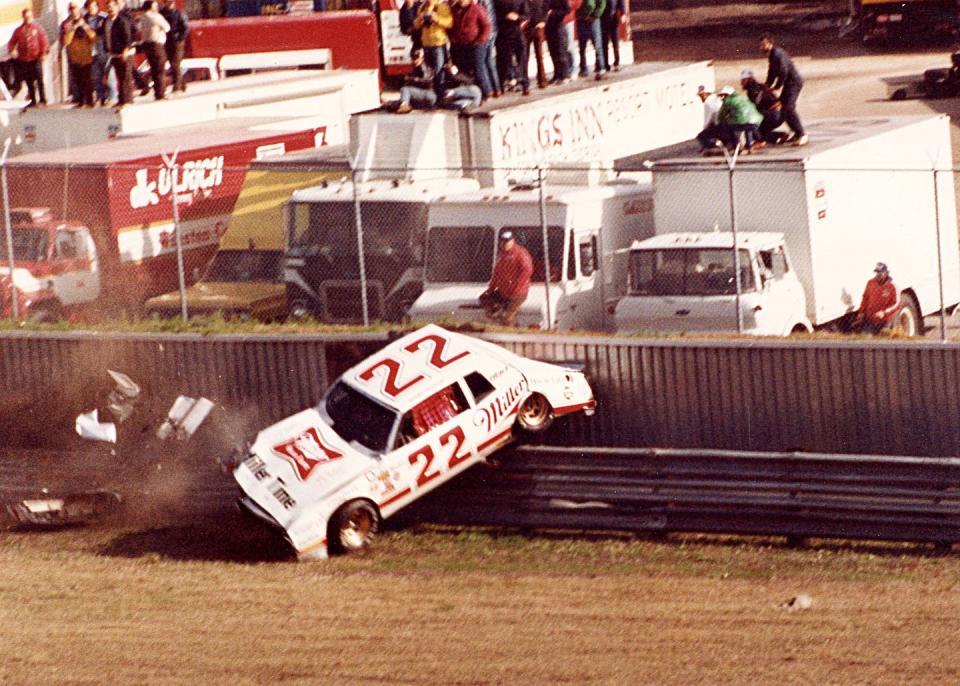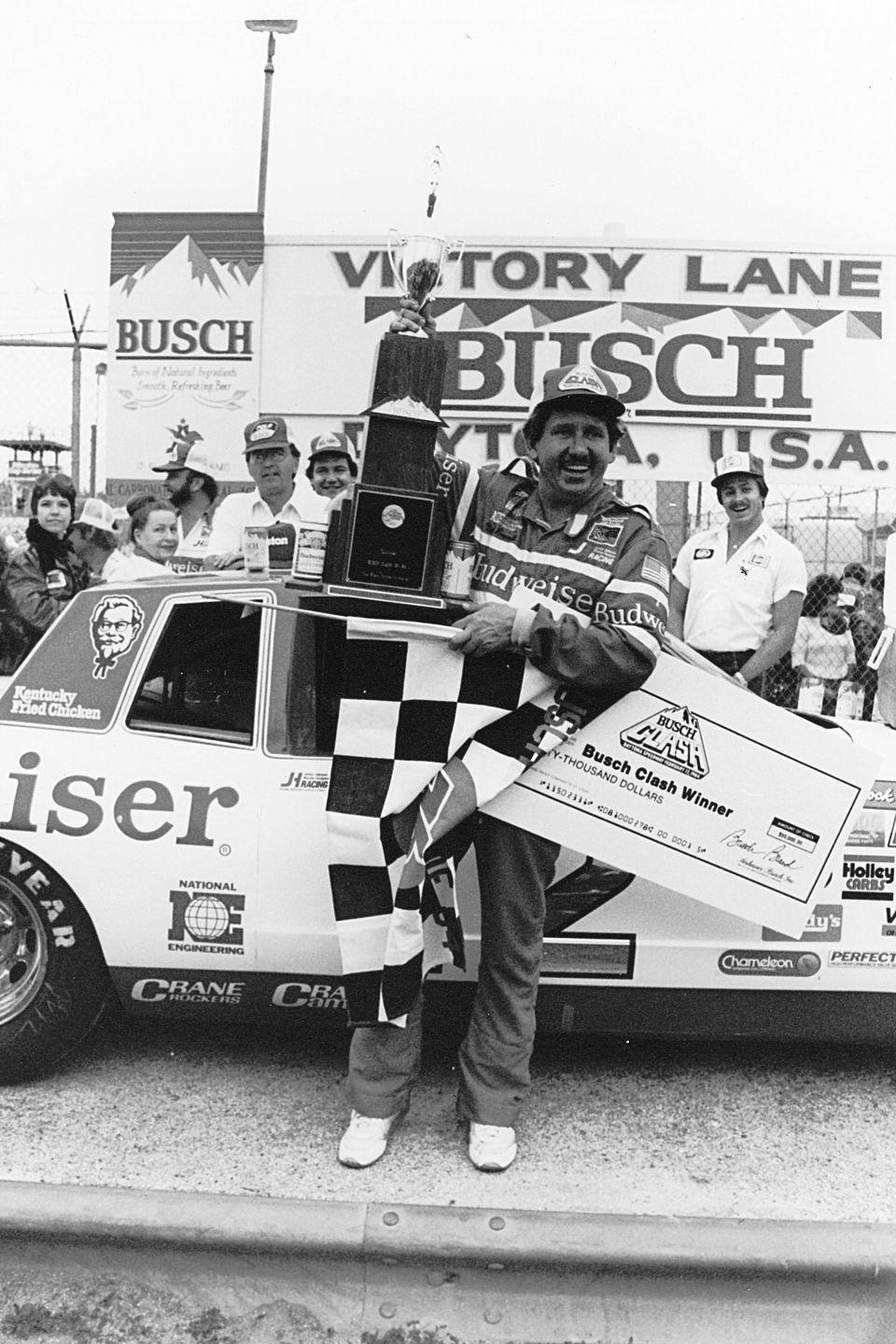NASCAR Busch Light Clash Simply Isn't What It Used to Be

The Busch Clash made its debut in 1979 and was designed to spark interest in Cup qualifying throughout the season and showcase the sport’s fastest cars.
The short trophy dash, along with Daytona 500 qualifying and the ARCA season opener, kicked off Speedweeks’ stock car racing portion.
No longer is there a prerequisite, such as earning a pole the previous year, for event participation. The race is open to all teams and drivers.
No one worried about the number of cars in the event or the format for the first dozen years—the 1981 version had only seven entries.
Six years before NASCAR introduced its All-Star race, the sanctioning body and Anheuser-Busch decided to create a non-points event designed to spark interest in Cup qualifying throughout the season and showcase the sport’s fastest cars.
Known as the Busch Clash when it made its 1979 debut at Daytona, it was a 20-lap high speed freight train that showcased drafting and the slingshot maneuver at the 2.5-mile track. It paid $50,000 to win and was something CBS could televise in a Sunday afternoon time slot to create interest in its Daytona 500 telecast a week later. The short trophy dash, along with Daytona 500 qualifying and the ARCA season opener, kicked off Speedweeks’ stock car racing portion.
That inaugural Busch Clash featured only nine drivers. Eight of those drivers received an automatic berth by earning a pole in 1978. The ninth driver claimed the wild card spot which was determined by a name draw from the drivers who had led second-round qualifying the previous year. Buddy Baker inked his name in the record books as the Busch Clash’s inaugural winner, defeating Darrell Waltrip by a car length, averaging 193.384 mph in the caution-free event.

Through the next 44 years, the race underwent numerous format, eligibility, and name changes. The name changes were directly related to the product being promoted. The nine format and 11 eligibility requirement alterations occurred in an attempt to spice up the event.
Today, the Busch Clash is simply an exhibition event, a marketing tool that NASCAR uses to introduce the sport to potentially new fans. That concept became evident last year when NASCAR decided to turn the historic Los Angeles Memorial Coliseum into a flat short track. The third venue to host the exhibition event—Daytona International Speedway and the Daytona Road Course being the other two—provided an opportunity to give the sport’s new car a competitive shakedown before heading to Florida for the season-opening Daytona 500.

No longer is there a prerequisite, such as earning a pole the previous year, for event participation. The race is open to all teams and drivers. All 36 Charter Cup teams have entered this year’s event with heat races determining the 27-car field for the feature. The top five finishers in each of the first four 25-lap heat races will advance into the feature. The non-qualifiers will then compete in two 50-lap races with the top three moving into the feature. The 27-car field will be completed by adding the highest finishing driver in the 2022 Cup Series point standings who hasn’t already earned a starting berth in the feature.
That’s a far cry from the Clash’s original version which often provided a preview as to who possessed the horsepower needed to contend for the coveted Daytona 500 victory. No one worried about the number of cars in the event or the format for the first dozen years. The 1981 version had only seven entries.
Seven-time NASCAR champion Dale Earnhardt always flexed his Richard Childress Racing Chevrolet’s muscle in that event, signaling his team’s strength. Of the 24 drivers who have won the event, Earnhardt leads them with six victories. The other 11 drivers who have multiple victories in the Busch Light Clash are last year’s winner and Cup champion Joey Logano, Dale Jarrett, Kevin Harvick, Tony Stewart, Denny Hamlin, Neil Bonnett, Ken Schrader, Jeff Gordon, Dale Earnhardt Jr., Jimmie Johnson and Kyle Busch.
Busch Light Clash Format Through The Years
1979-1990: A 20-lap green flag race with no required pit stops.
1991-1997: The race consisted of two 10-lap, green-flag segments. The field was inverted for the second segment.
1998-2000: It was renamed the Bud Shootout and consisted of two 25-lap races. The Bud Shootout Qualifier occurred an hour before the Bud Shootout and the winner advanced into the main event. One two-tire stop was required in each race.
2001-2002: The renamed Budweiser Shootout was expanded to a 70-lap event. Caution laps would count, but the finish had to be under green. The green-white-checker rule was in place. At least one two-tire green flag stop was required. The Bud Shootout Qualifier was discontinued since qualifying for Cup races was reduced to a single round.
2003-2008: During these years, the race was divided into two segments. The first segment was 20 laps, followed by a 10-minute break, and then the race concluded with a 50-lap segment. A pit stop was no longer required.
2009-2012: The race is now a two-segment, 75-lap race. The first segment was 25 laps and the second 50 laps.
2013-2015: During these years, the race was turned into a 75-lap event comprised of three segments. Online fan voting determined certain aspects of the race, including segment length, requirements for mandatory pit stops, and the number of drivers eliminated after each segment.
2016-2020: The format returned to a 75-lap race with two segments: 25 and 50 laps.
2021: A 35-lap race divided into two segments of 15 and 20 laps.
2022-2023: The current heat-race format.

 Yahoo Autos
Yahoo Autos 